Background
Disasters place disproportionate stresses on disadvantaged populations who more readily experience resource loss and health risks during emergency situations. One of the most vulnerable populations during a disaster are the several million Americans who misuse prescription opioids and illicit drugs (a number that continues to rise as the United States faces one of the worst opioid abuse epidemics in its history). To address this national emergency, ASTHO funded National Development and Research Institutes (NDRI) to develop this website to share evidence-based best practices and guidelines with opioid service and treatment providers, policymakers, and local officials, as well as opioid users and their families.Methodology
Content included here consists of videographic and textual resources as well as descriptions and links to online resources. Focus groups and in-depth interviews were conducted with a wide range of stakeholders including patients, staff and administrators from opioid treatment programs (OTPs), clients and staff from harm reduction agencies, organizers and educators in local communities and more. All interviews were video recorded and selected recordings were transcribed and data coded to generate a comprehensive list of topic areas and guidelines for best practices. Several of the interviews were conducted with stakeholders who had direct experience with natural disasters such as Hurricane Sandy (NYC – Metro area) and Hurricane Harvey (Houston, TX).Many of the disaster preparedness and recovery guidelines included on this website were informed by an ASPR-funded study on the impact of Hurricane Sandy on OTPs. The findings from this study (which includes a list of practice guidelines for OTPs) can be found in the following articles:
Matusow et al., Challenges to Opioid Treatment Programs After Hurricane Sandy: Patient and Provider Perspectives on Preparation, Impact, and Recovery. Subst Use Misuse. 2018; 53: 206-219.
Elliott et al., Disaster preparedness among opioid treatment programs: Policy recommendations from state opioid treatment authorities. Int J Disaster Risk Reduct. 2018; 23:152-159.
ASTHO is the national nonprofit organization representing the public health agencies of the United States, the U.S. territories and freely associated states, and the District of Columbia, as well as the more than 100,000 public health professionals these agencies employ. ASTHO members, the chief health officials of these jurisdictions, are dedicated to formulating and influencing sound public health policy and to ensuring excellence in public health practice.
The development of this website and its tools, recommendations, and research was supported by the Department of Health and Human Services Office of the Assistant Secretary for Preparedness and Response under award number 6 HITEP130002-03. The content is solely the responsibility of the authors and does not necessarily represent the official views of the Department of Health and Human Services Office of the Assistant Secretary for Preparedness and Response.

